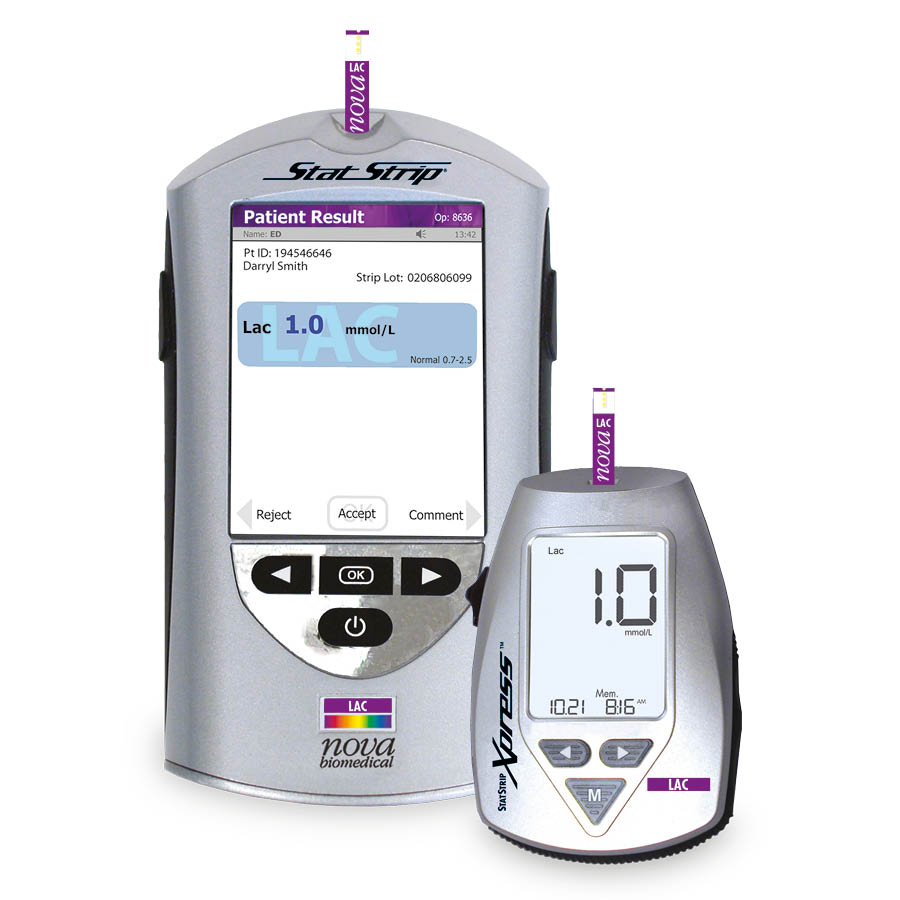Lactate from Fetal Scalp samples
Assessing fetal distress during labor.
Fetal scalp blood testing is used in obstetrics during labor, to confirm if the fetal oxygenation is sufficient. A capillary blood sample can be taken from the baby´s scalp. Traditionally pH measurements were made during Fetal Scalp testing but recently with advances in Lactate testing in POC devices, the test menu has been expanded to two parameters, pH and lactate. Both tests being indicators of acid base homeostasis.
An abnormal fetal heart rate during labor can indicate the baby not being able to adapt to decreases in oxygen supply during birth. This may lead to an increased amount of lactate and the baby to develop acidosis (low pH levels). After the cervix dilated to around 3 cm, a sample can be retrieved by creating a small cut on the fetal scalp. This allows the physician to retrieve a sample of blood, to measure Lactate or pH.
A low pH and high level of lactate indicate that there is acidosis, which in turn is associated with hypoxia.
The benefits of testing lactate are that it requires a much smaller sample. Several studies have shown that pH and lactate appear to have the same sensitivity in indicating hypoxia during labor.1 However, analysis of pH requires a relatively large amount of blood, and sampling failure rates of 11–20% have been reported.1
Lactate testing was more likely to be successful than pH testing, but with no differences in newborn outcomes, including the number of babies with low Apgar scores, low pH in their cord blood or admissions to the neonatal intensive care nursery.2
Validation of a point-of-care (POC) lactate testing device for fetal scalp blood sampling during labor: clinical considerations, practicalities and realities
Philipp Reif*, Ioanna Lakovschek , Carmen Tappauf , Josef Haas , Uwe Lang and Wolfgang Schöll
Background: Although fetal blood sampling for pH is well established the use of lactate has not been widely adopted. This study validated the performance and utility of a handheld point-of-care (POC) lactate device in comparison with the lactate and pH values obtained by the ABL 800 blood gas analyzer.
Conclusions: A POC device which allows for a calibration adjustment to be made following preclinical testing can provide results that will correlate closely to an incumbent lactate method such as a blood gas analyzer. The use of a POC lactate device can address the impracticality and reality of pH sample collection and testing failures experienced in day to day clinical practice. For the StatStrip Lactate meter we suggest using a lactate cut-off of 5.1 mmol/L for predicting fetal acidosis (pH < 7.20)
*Corresponding author: Philipp Reif, MD, Department of Obstetrics and Gynecology, Medical University of Graz, Austria
Ioanna Lakovschek, Carmen Tappauf, Josef Haas, Uwe Lang and Wolfgang Schöll: Department of Obstetrics and Gynaecology, Medical University of Graz, Graz, Austria
References:
- Wiberg-Itzel, E.; Lipponer, C.; Norman, M.; Herbst, A.; Prebensen, D.; Hansson, A.; Bryngelsson, A. -L.; Christoffersson, M.; Sennström, M.; Wennerholm, U. -B.; Nordström, L. (2008). “Determination of pH or lactate in fetal scalp blood in management of intrapartum fetal distress: Randomised controlled multicentre trial”. BMJ. 336 (7656): 1284–1287. doi:10.1136/bmj.39553.406991.25. PMC 2413392. PMID 18503103.
East CE, Leader LR, Sheehan P, Henshall NE, Colditz PB, Lau R. (2015) “Use of fetal scalp blood lactate for assessing fetal well-being during labour”. Cochrane Systematic Review – Intervention, https://doi.org/10.1002/14651858.CD006174.pub3
Fetal scalp lactate testing with following system:
Networkable point-of-care test strip system for measuring lactate.


